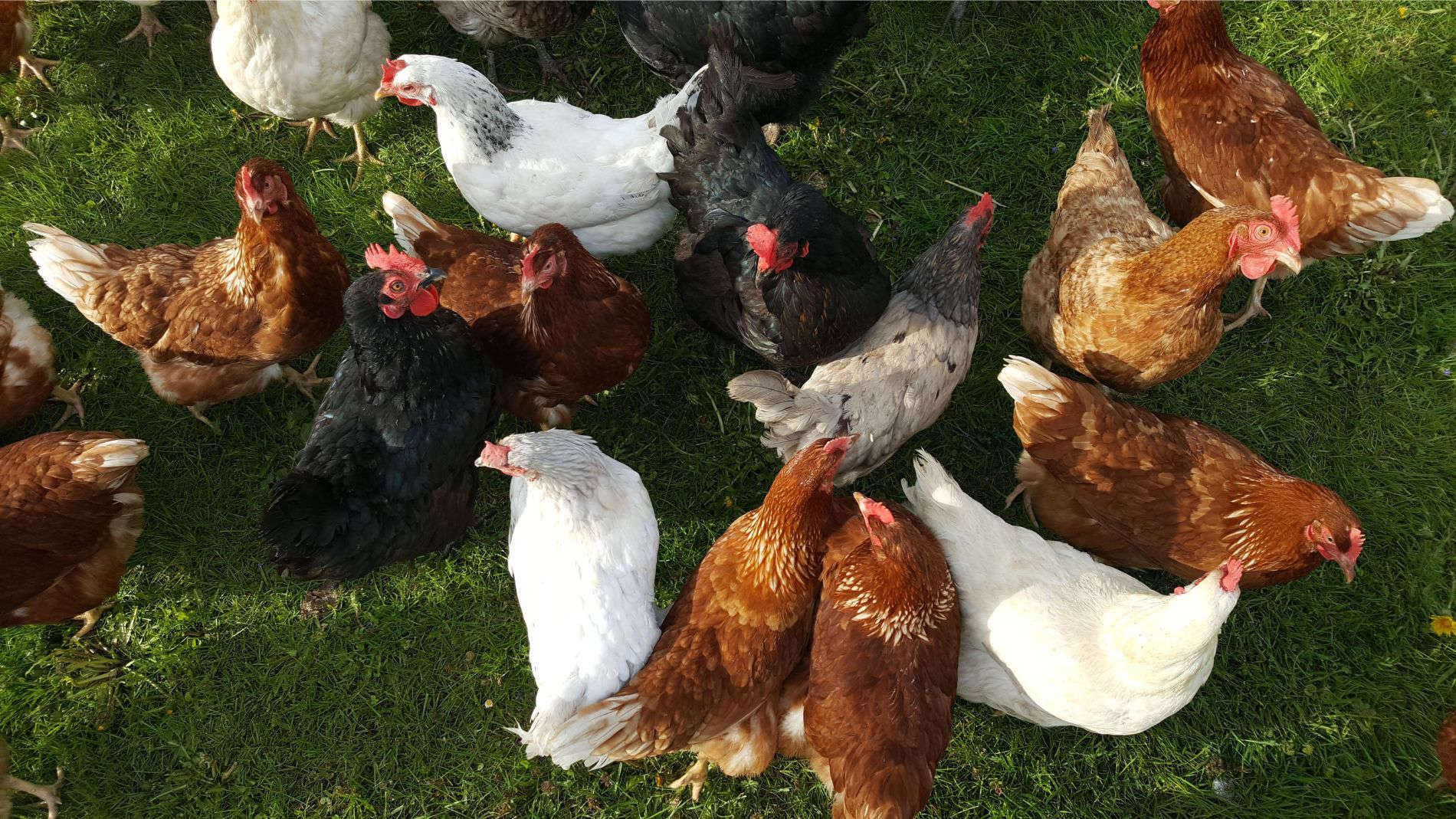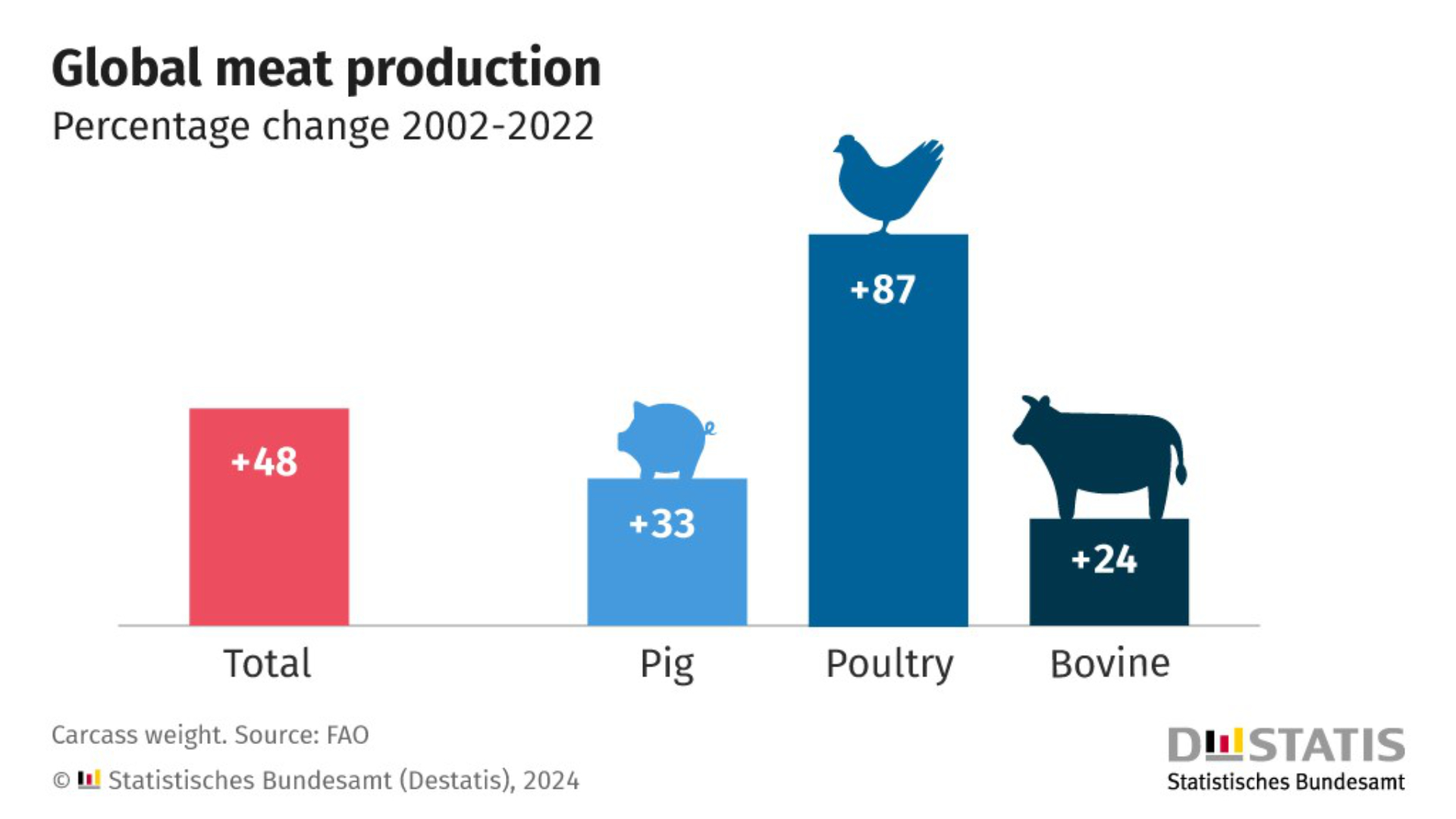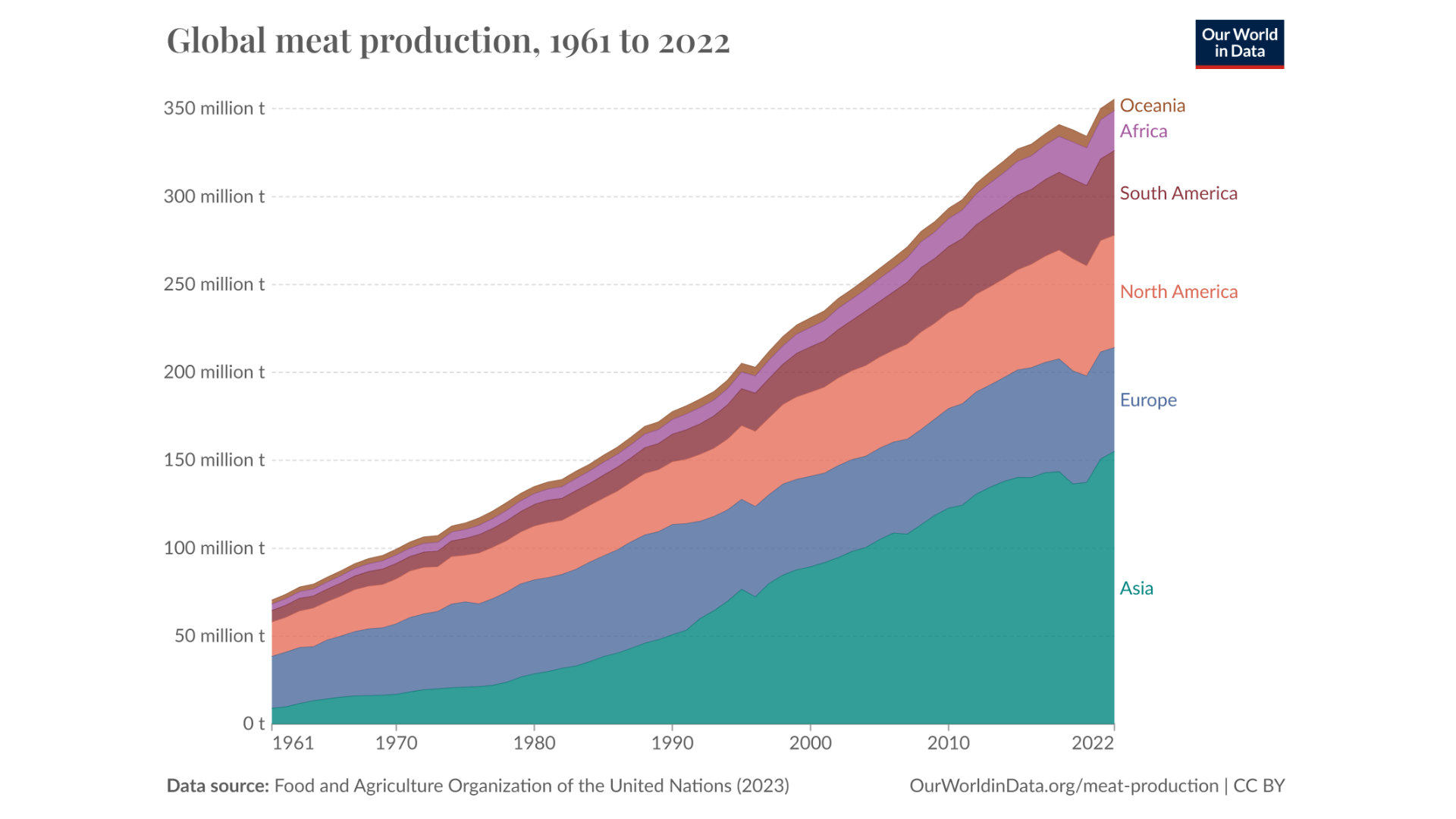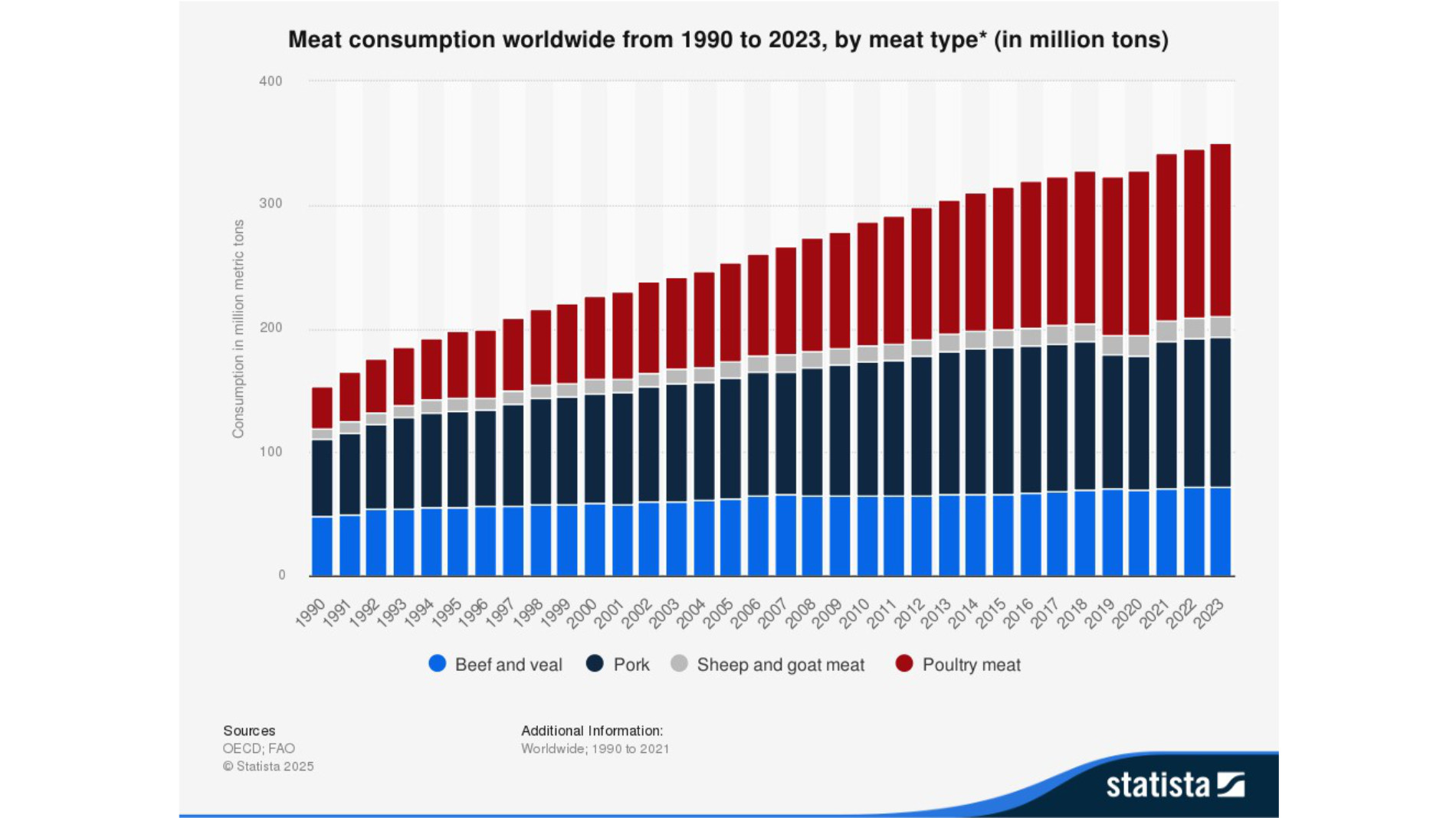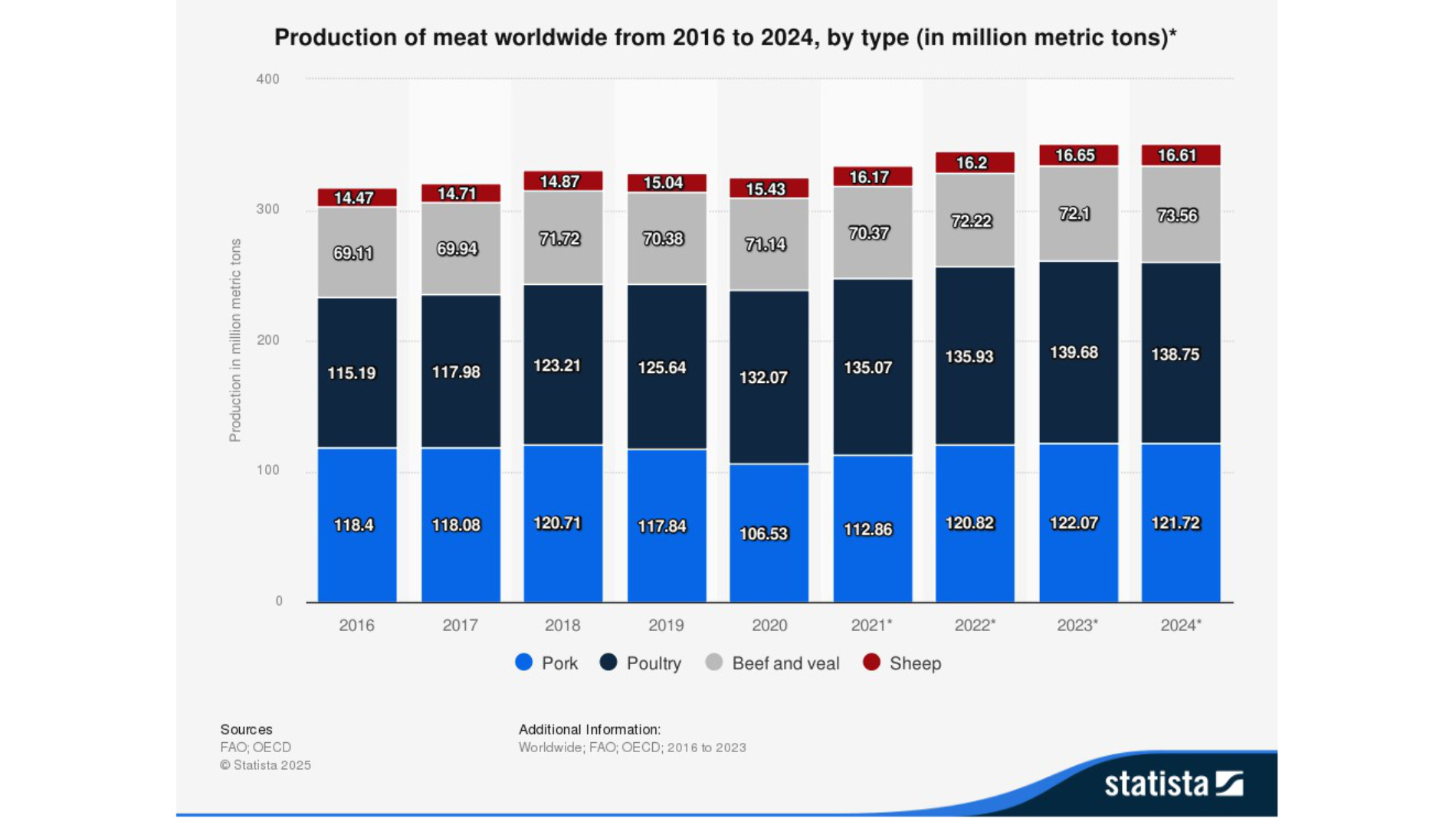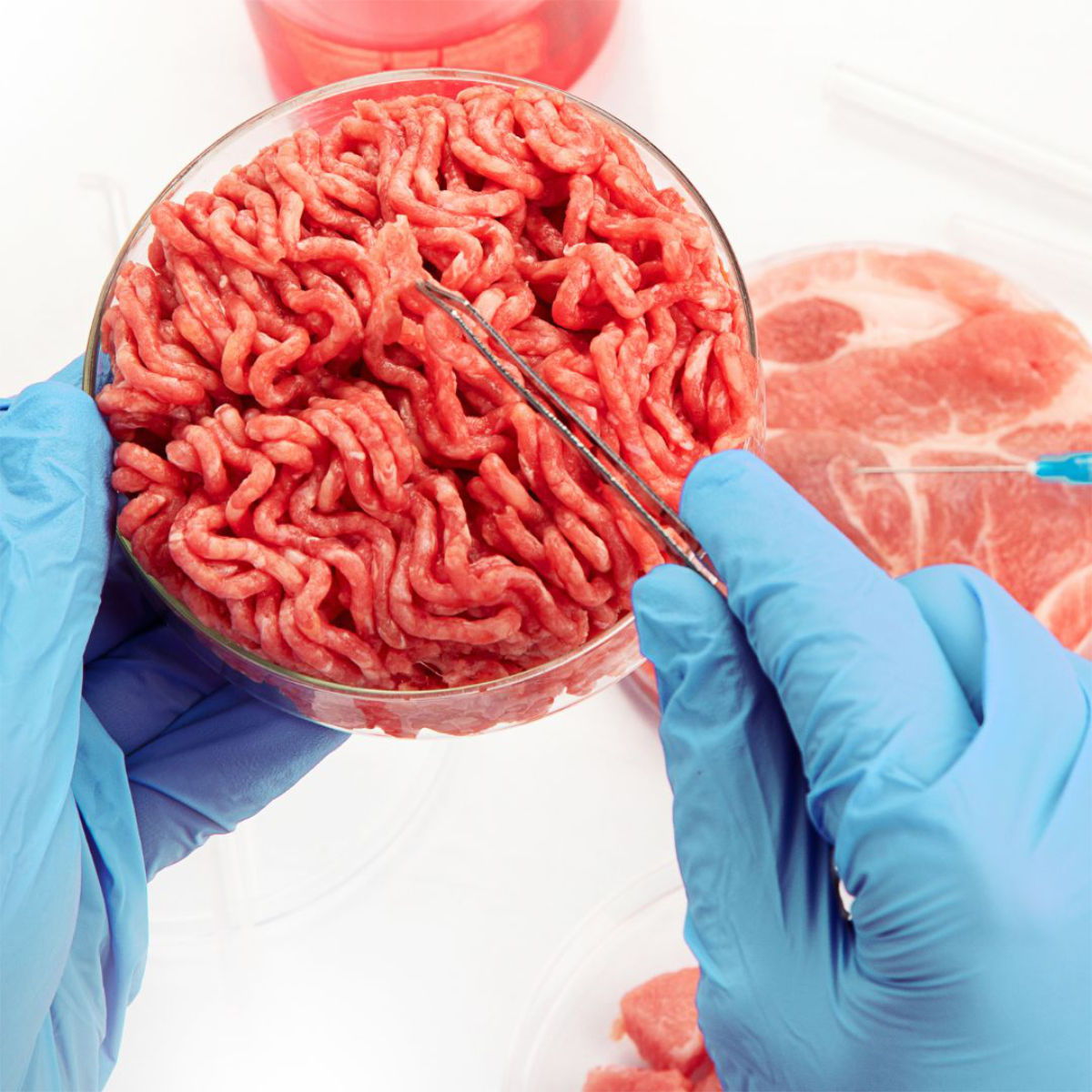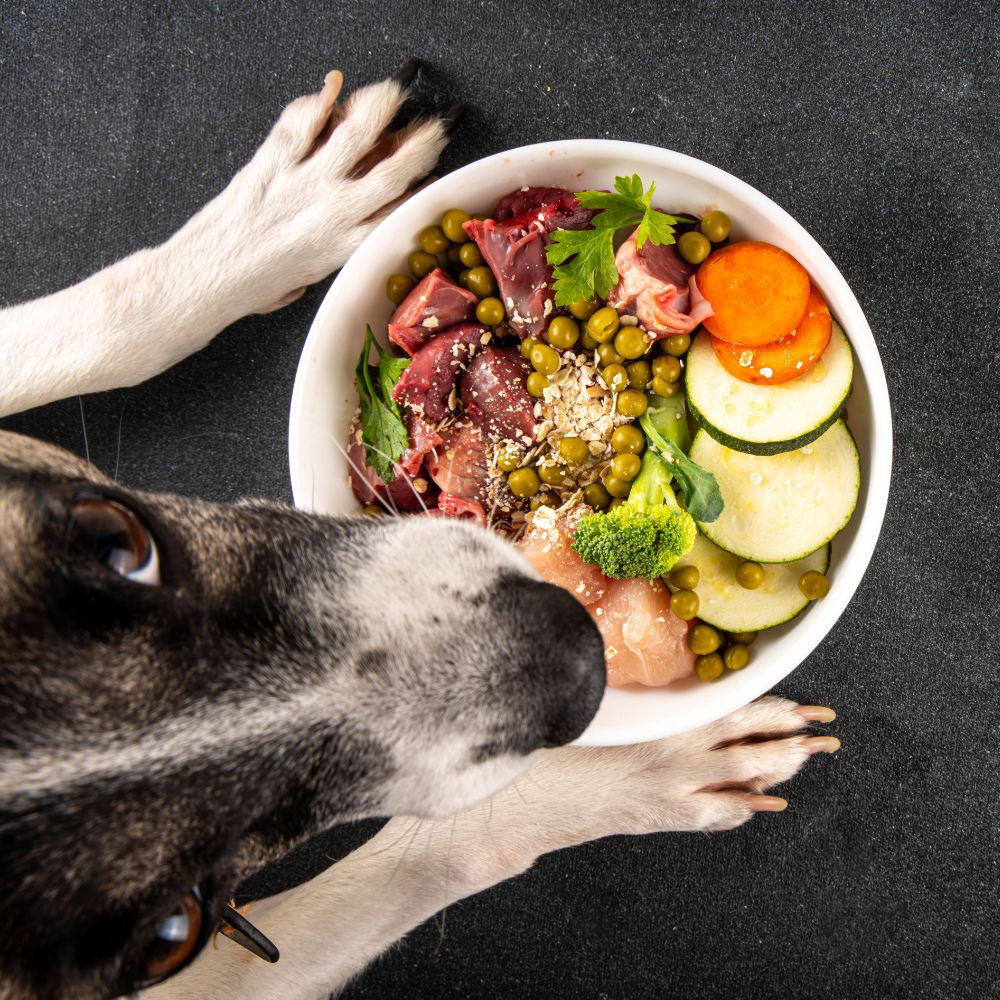Reading time: 3 minutes
It is considered healthy, versatile and easy to prepare, inexpensive and produced more sustainably than red meat: poultry meets numerous consumer demands and has therefore been flying high for years. Consumption volumes are growing steadily. In 2024, white meat became the driving force on the German meat market. According to the Federal Information Centre for Agriculture, every German ate 13.6 kilograms of poultry, 500 grams more than in the previous year. Pork still ranks first with a per capita consumption of 28.4 kilograms. However, compared to 2023, this represents a decrease of 100 grams on the plates of German citizens. Despite higher consumer prices, beef and veal consumption remained stable at 9.3 kilograms.
Around 73 per cent of the poultry consumed is meat from young broiler chickens, and 23 per cent is turkey. Goose and duck meat make up the rest of the total consumption, but play a minor role. These fattier types of poultry are traditionally purchased most in the autumn and winter seasons.
Production and demand
Industry representatives and market experts expect the poultry meat market to continue to develop positively in the future. President Hans-Peter Goldnick of the Central Association of the German Poultry Industry considers a further 50 per cent increase in consumption to be conceivable. Professor Achim Spiller, who holds the chair of ‘Marketing for Food and Agricultural Products’ at Georg August University in Göttingen, also expects poultry to have overtaken pork as the most popular meat by the end of 2030 at the latest. Local poultry meat producers are expanding their capacities accordingly: from 2010 to 2024, their slaughter volumes rose from 1.3 to 1.6 million tonnes, surpassing those of beef (1 million tonnes).
Globally, experts expect growth primarily in emerging markets, where both population and income are rising. The Dutch Rabobank predicts that emerging markets in Southeast Asia, Latin America, the Middle East and Africa will accelerate growth in the poultry meat sector. Analysts also attribute the continuing upward trend to favourable consumer prices, which are a decisive factor, especially in times of economic pressure and high prices for other proteins. Assuming that the impressive pace seen since 2024 continues, the global poultry market is expected to grow by 2.5 to 3 per cent this year.
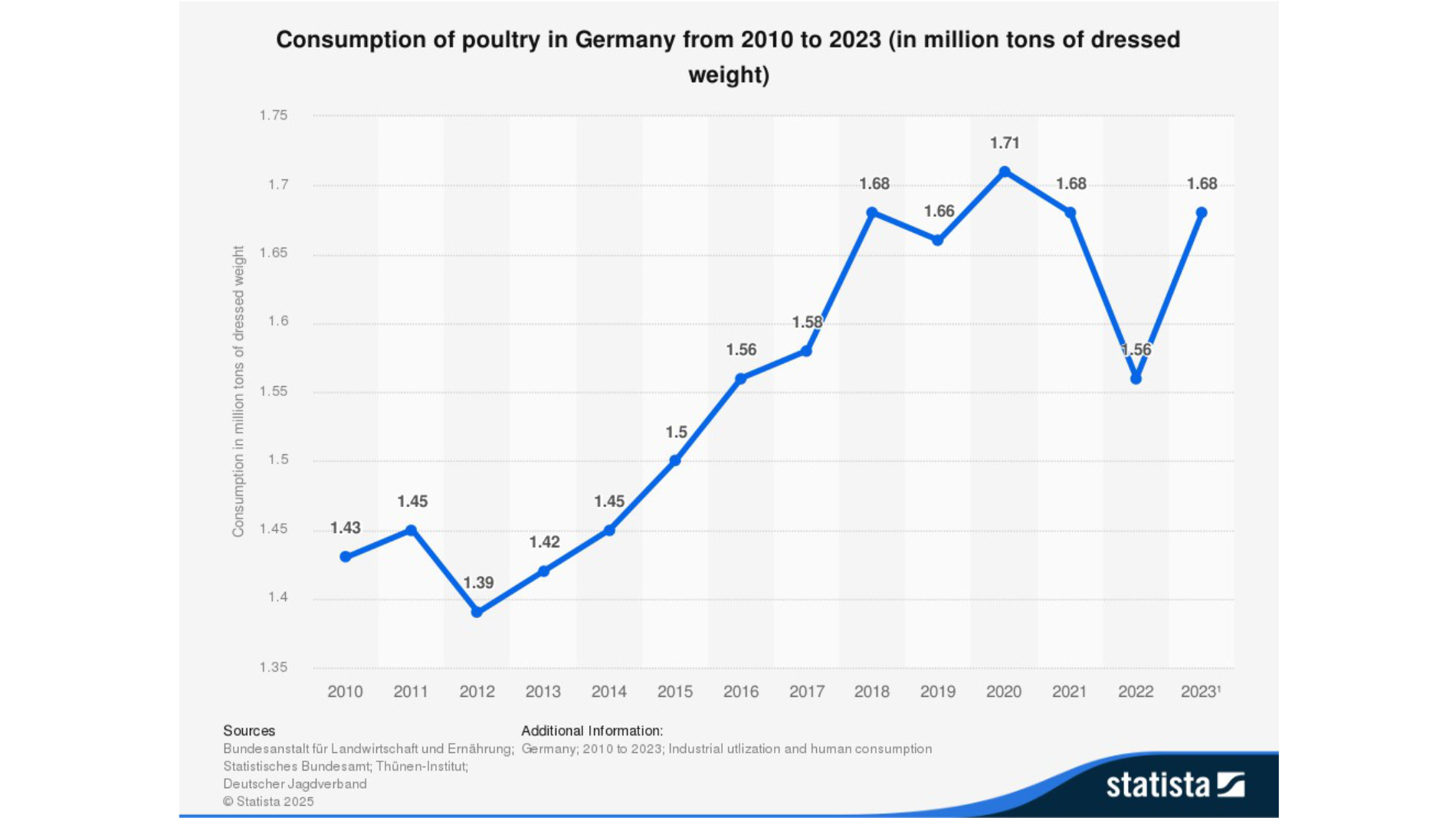
Bundesanstalt für Landwirtschaft und Ernährung. (March 15, 2024). Consumption of poultry in Germany from 2010 to 2023 (in million tons of dressed weight) [Graph]. In Statista. Retrieved September 02, 2025, from https://www.statista.com/statistics/1270837/poultry-consumption-germany/
Global hunger for protein
The current population growth to more than 8 billion people is driving global demand for poultry meat as a protein-rich food. The Organisation for Economic Co-operation and Development (OECD) and the Food and Agriculture Organisation of the United Nations (FAO) highlight the growing importance of poultry meat in their ‘Agricultural Outlook’1 published in July 2024. The report predicts a global increase in consumption of around 15 per cent by 2032. Poultry meat will then account for 41 per cent of consumers' total meat protein consumption. It is already the most important source of protein in North and South America, Australia and Asia.
Nutrient-rich and practical
A look at its nutrient content illustrates why chicken and turkey meat is the healthier alternative to red meat. Poultry is considered to be extremely low in fat and calories. Depending on the type of animal and cut, 100 grams of meat contains between 114 and 173 kilocalories and between 3.6 and 11.2 grams of fat. The fat it contains consists mainly of unsaturated fatty acids, which have a positive effect on cholesterol levels and the cardiovascular system.
The protein content is also impressive: it ranges from 16 to 24 grams per 100 grams of meat and scores highly with its high biological value of 80. This means that 80 per cent of the protein consumed in chicken or turkey can be converted into the body's own protein. Furthermore, poultry meat protein contains almost all the essential amino acids that the human body needs to build muscles, skin and bones, and to produce hormones and enzymes.
Just 100 grams of poultry covers 77 per cent of an adult's daily requirement of niacin, 37 per cent of vitamin B6 and 15 per cent of vitamin B12. These B vitamins, which are also found in sufficient quantities in the minerals potassium and magnesium and the trace elements iron and zinc, are extremely important for the functioning of the immune and nervous systems and for the supply of all organs.
The fairly mild flavour of chicken and turkey meat makes it easy for poultry suppliers to develop new flavours that fit into any world cuisine. Even inexperienced cooks can't go far wrong when preparing it. Consumers also appreciate its versatility: whether whole or in pieces, suppliers offer portions to suit every household size.
Sources
1 "OECD-FAO Agricultural Outlook 2024-2033"
https://www.oecd.org/en/publications/oecd-fao-agricultural-outlook-2024-2033_4c5d2cfb-en/full-report.html
